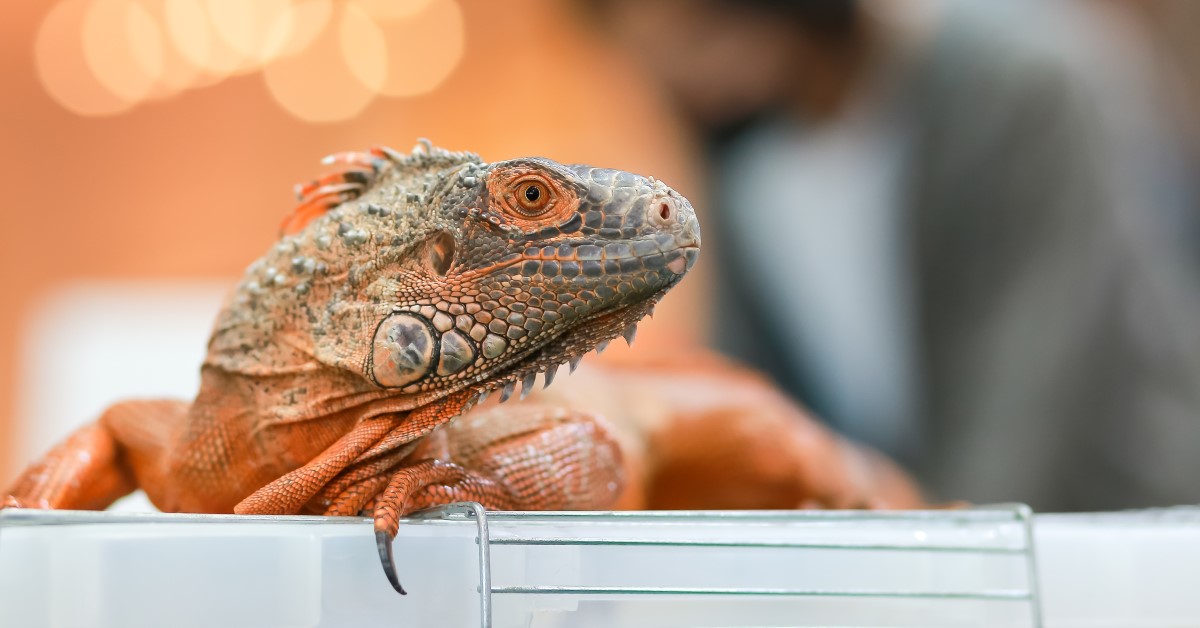7 Reptiles That Make Great Pets
This handy guide can help you choose the perfect pet reptile for your needs and lifestyle.

When many people think of pets, they automatically envision furry companions like cats and dogs. However, if you’re looking for something a bit more exotic, interesting, and unusual, you may find yourself in the reptile section of your local pet store.
Reptiles such as iguanas, snakes, and tortoises can brighten your life with their striking appearances, fascinating behaviors, and relatively modest needs. Choosing a reptile can prove confusing (there are hundreds of species!), so let's take a look at some of the best pet reptile species to suit different lifestyles preferences.
Leopard Gecko
People adopt many kinds of geckos as pets, but the Leopard Gecko can prove especially attractive for beginners or those seeking an easy-to-care-for reptile. These creatures rarely grow more than 10 inches in length, and unlike some of their gecko cousins, they won't try to climb out of their enclosure. You'll want to equip that enclosure with the basic lizard essentials: a heat source, water dish, and interesting little places to hide. Feed your gecko a mix of vegetables, worms, and crickets. Don't be surprised if your new friend prefers to sleep all day and become active at night.
Crested Gecko
This popular gecko loves to climb, requiring you to keep a tight lid on its enclosure. However, you may love watching this amazing lizard negotiate branches and other perches you add to its living space. In other respects, crested geckos are easy to care for, dining on a combination of insects and commercial gecko food and living quite comfortably at room temperature. They also offer up to 20 years of companionship for owners who seek a long-term bond with a playful, active pet.
Bearded Dragon
If you want a gentle yet friendly pet reptile that happily interacts with humans, a Bearded Dragon makes an ideal choice. These lizards live up to ten years and may grow close to two feet in length. They get their name from their characteristic beard-like chin scales (prompting many enthusiasts to refer to them as "beardies''). Your bearded dragon will require a diet of both plants and animals, as well as an enclosure that gives it plenty of UV rays and a temperature range from the mid-70s to a maximum of 105 degrees Fahrenheit.
Hermann's Tortoise
Before you decide to purchase a turtle as your pet reptile, consider getting a tortoise instead. While these creatures have some obvious similarities, tortoises have the crucial advantage of not living in an aquatic environment -- which means you can set up a simple dry environment instead of investing in a more complex enclosure. Hermann's tortoise offers a fine example of an easy-care reptile, growing less than a foot long and dining on common weeds and grasses. This tortoise benefits from a bath every few days so its body can remain properly hydrated.
Russian Tortoise
The Russian tortoise enjoys a reputation as one of the most popular pet reptile species for all ages. These small animals are easily fed with leafy greens and/or commercial tortoise food, with the occasional bit of fruit as a treat. You can keep your Russian tortoise outdoors if you live in a hot climate; otherwise, you should set up an enclosure with full-spectrum heat lamps that also produce UVB rays. With the proper care and attention, a Russian tortoise can live for up to 40 years -- so think carefully about the degree of commitment you're willing and able to give your new family member.
Corn Snake
If you prefer a pet reptile that slithers instead of walking or climbing, this member of the snake family could turn out to be exactly what you're looking for. They sport beautiful colors, are non-venomous, and enjoy an enclosure filled with branches and areas that will let them indulge their instinct for digging. Some never grow larger than two feet while others may eventually reach six feet in length, so plan your enclosure with plenty of extra space in mind. Don't let the name fool you; corn snakes feed on rodents, not corn.
King Snake
The King Snake might qualify as the perfect apartment snake due to its reasonable size (under five feet), amiable personality, and a nocturnal lifestyle that keeps them inactive during daylight hours. The more often you handle a King Snake, the friendlier and more willing to be handled it becomes. Like many other snake species, you'll need to feed your King Snake a diet of small prey such as baby mice. Don't feed them live animals, though; instead, purchase frozen, pre-packaged feeder prey from the pet store as a safer, healthier alternative.
Double-Check Your Choice With an Exotic Animal Veterinarian
Whatever pet reptile species you end up choosing, make sure you have access to an exotic animal veterinarian before you make that purchase. These specialists understand the unique medical needs and challenges of the more unusual animals, including reptiles, birds, and pocket pets. Once you've selected your vet, talk to them about your needs, goals, and lifestyle so you and your vet can settle on the ideal reptile for you. Then make sure to schedule the necessary wellness exams and other vet visits to help your new pal stay healthy for life!
Ready to start saving money on pet wellness care?
Then take a look at Mint Wellness, the pet wellness plan that provides fast reimbursement on routine pet care. Save on vaccinations, wellness exams, preventatives, dental, and more!
Learn More